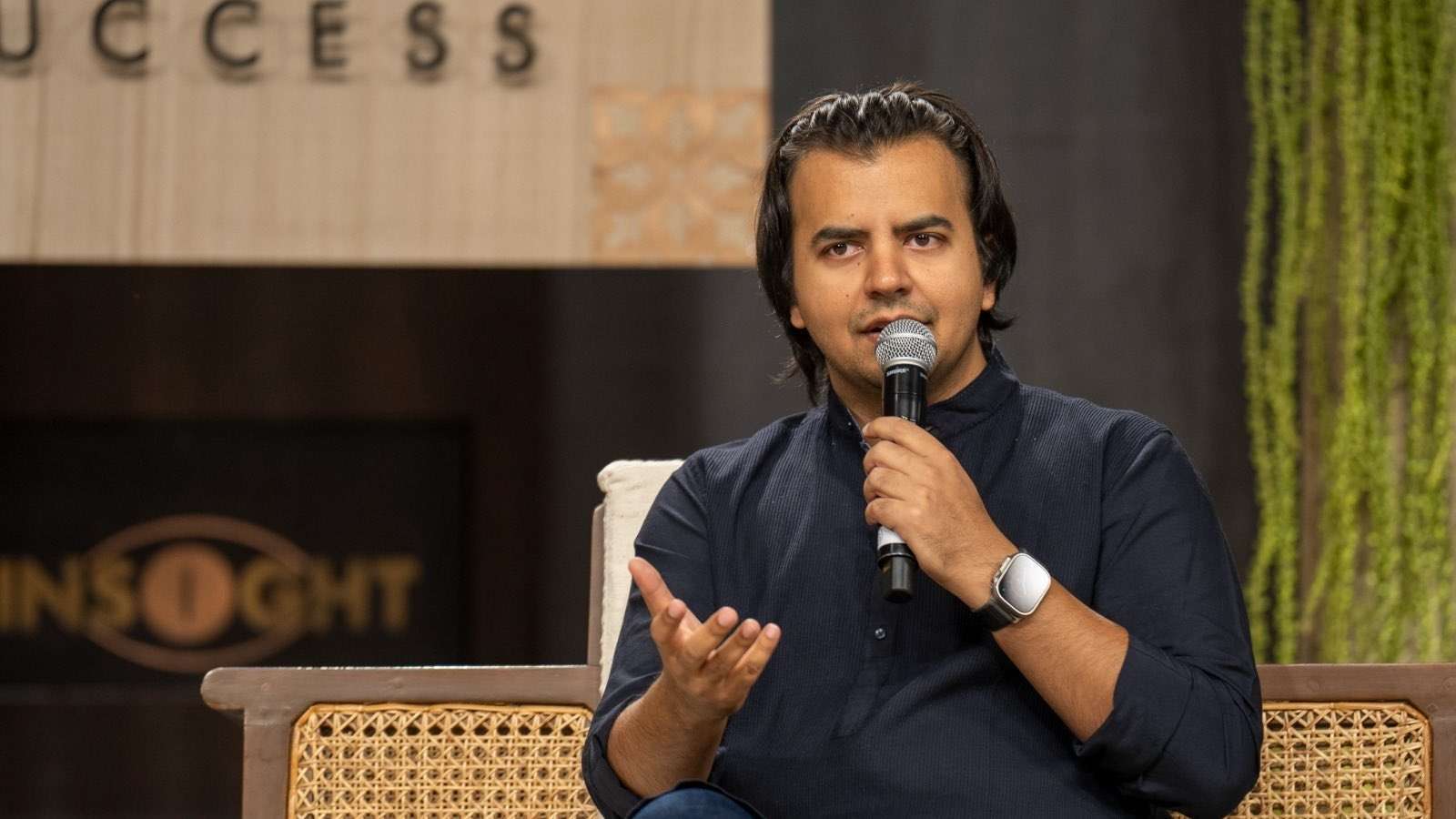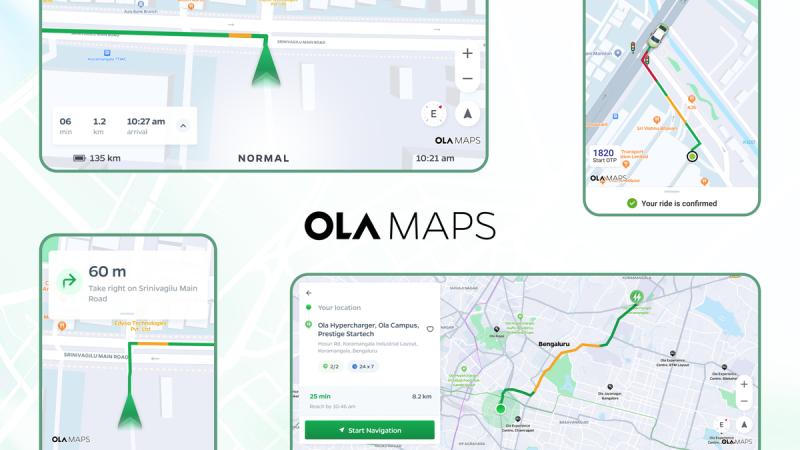Bhavish Aggarwal, The Man Of The Hour, Whose Recent Remark On Koo To His Appeal To Use Ola Maps, To Techno-Colonialism, Is The Recent Aggressive Sounding Board A Result Of Impending Rs 7,250 Crore Ola IPO?

Bhavish Aggarwal, the founder of Ola, has never been one to mince his words. Known for his aggressive stance in the office and his reputation as a tough boss (many employees attest to this), he has recently become more vocal with his opinions.
The most recent instance was his statement on Koo, India’s alternative to X (formerly Twitter), where he expressed his disappointment with X.
“It’s sad to see what happened with X. We need Indian social platforms, but simply copying what’s already out there won’t get us anywhere,” he wrote.
Considering this statement, one might wonder: is Ola a genuine idea?
 Just a few days ago, Aggarwal announced that the company has developed a cutting-edge lithium cell battery named “Bharat Cell,” which is currently undergoing advanced trials. He believes it could be a game-changer for the Indian electric mobility ecosystem once launched on a full scale.
Just a few days ago, Aggarwal announced that the company has developed a cutting-edge lithium cell battery named “Bharat Cell,” which is currently undergoing advanced trials. He believes it could be a game-changer for the Indian electric mobility ecosystem once launched on a full scale.
The frequent use of the term “Bharat” raises questions; what is so “Bharat” about it?
According to Aggarwal, it is a natural progression for a business to innovate and develop products that meet the current needs and support the business. The Bharat Cell battery uses cathode-anode technology. Aggarwal explained that while Ola makes the cathode and anode, the materials come from outside—Japan, Korea, China, and Europe.
“The imported materials, known as cathode active material and anode active material, consist of elements like nickel, cobalt, manganese, and graphite. India’s strong pharmaceutical and chemical industries could significantly contribute to the production of electrolytes for these batteries,” Aggarwal outlined.
While China currently leads in manufacturing these key materials, Aggarwal believes India can localize the supply chain within the next four to five years.
“We’ve made the anode-cathode, but the anode-cathode material still comes from outside. That is the midstream where China leads today. We will have a three, four, five-year journey to localize it step by step,” Aggarwal added.
The point to note here is that the materials are imported—some from Japan, Korea, China, and Europe—so what is so “Bharat” about it?

Please Use “Bharat” Ola Maps
Further discourse from the founder and CEO revealed that following their departure from Microsoft Azure Cloud, he has now urged developers should transition away from Google Maps.
He announced a one-year free access offer to Ola Maps on the AI-driven Krutrim platform, along with over Rs 100 crore in free credits for developers.
Last week, Ola made the strategic decision to switch from Google Maps to its in-house Ola Maps for cab operations, a move expected to save the company nearly Rs 100 crore annually.
“We’ve been using western apps to map India for too long, and they don’t address our unique challenges: street names, urban changes, complex traffic, non-standard roads, etc.,” Aggarwal said.
He stated that Ola Maps addresses these challenges using AI-powered India-specific algorithms and real-time data from millions of vehicles. The platform has made significant contributions to open source, with over 5 million edits to Open Street Maps just last year.
Recently, more business leaders are vocally comparing Indian companies to their Western counterparts, reminiscent of the Bajaj scooter era. However, the core issue may not be about this rivalry but rather about accessing the best products and services that provide the most value for hard-earned money.
Bhavish Aggarwal recently also criticized LinkedIn after the platform removed his post on “pronoun illness.” According to Aggarwal, LinkedIn’s AI tool was imposing a political ideology on Indian users, which he believes is unsafe and sinister. He expressed these concerns in a post on another platform.
 ‘Techno-colonialism’
‘Techno-colonialism’
Aggarwal has also introduced the term “techno-colonialism” to describe the current data practices of international tech companies.
He compared these practices to the exploitation by the British East India Company, accentuating that while India produces 20 percent of the world’s data, the benefits are largely reaped by foreign entities.
“Only one-tenth of that data is stored in India. Ninety percent is exported to global data centers, largely owned by big tech companies,” he noted. “It is processed into AI, brought back into India, and sold to us in dollars.”
He drew parallels to the historical context, saying, “This is exactly what happened 200 years ago with the East India Company. They exported cotton and brought back clothes. Now we’re exporting data and bringing back intelligence… Techno-colonialism.”
 Ola Electric IPO
Ola Electric IPO
Meanwhile, several stock brokerages, including Emkay Global and Nuvama Institutional Equities, attended an analyst meet hosted by Ola Electric.
The meet featured interactions with Founder and CMD Bhavish Aggarwal and visits to facilities in Tamil Nadu and the R&D center in Bangalore. Analysts noted that Ola Electric views scale and vertical integration as its major competitive advantages.
The company expects significant improvements in profitability, with production costs declining and continued efforts to reduce them further. Analysts also reported that Ola Electric’s self-developed battery cells are expected to enter serial production early next year.
Ola Electric has received SEBI’s approval for its Rs 7,250 crore IPO.
The fresh issue size is estimated at Rs 5,500 crore, which will be used for cell manufacturing, debt repayment, R&D expenses, organic growth initiatives, and general corporate purposes.
An offer for sale by the promoter group and various other investors aggregates 95 crore shares. The promoter group holding pre-IPO was 45.14 percent, while Bhavish Aggarwal’s direct holding in the company stood at 36.94 percent.
Based on a hypothetical valuation of $6 billion for Ola Electric, Bhavish Aggarwal’s share sale of 47.4 million shares could translate into a windfall of around $78 million (roughly ₹ 650 crore).
It’s important to remember that this is an estimate and the actual amount he earns will depend on the final IPO valuation.
The total proceeds from the Offer for Sale (OFS) by all existing investors, including Aggarwal, could reach as high as $156.7 million (over Rs 1,300 crore) at the $6 billion valuation.
However, this figure will also fluctuate based on the final pricing during the IPO.
The Viewpoint
Perhaps Bhavish Aggarwal’s recent statements are part of a strategic effort to generate buzz for the Ola Electric IPO, keeping the company in investors’ minds and promoting the “Bharat Growth Story.”
Will he succeed?




